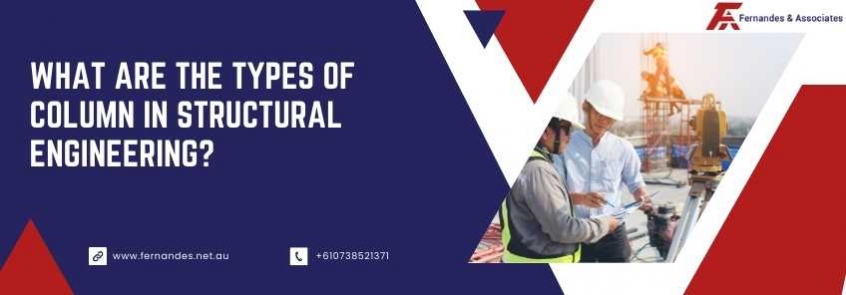-

The Types Of Column In The Construction Of A Structure
By Fernandes & Associates Pty Ltd 18 Oct 2022If you look at any structure in the construction stage you will notice it is just a work of column. It doesn’t even remotely resemble the final structure that it is supposed to look like. A novice without the knowledge of structural engineering may not the importance of these columns but once you gauge a little perspective on structural engineering you can understand its role. If you look around at any construction site in Brisbane, Queensland, you will witness a structural engineer erect various types of columns to support a structure and not just one. Why is it so?Let’s take an in-depth look at the types of columns to understand each of their importance
Columns
A structural engineer in your location i.e., Brisbane, Queensland or anywhere else in the world, uses columns for a specific reason in construction. Columns serve as a structural component that transmits loads from a structure's slab (the roof or upper floors) to its foundation and then to the ground beneath it. Typically, they are vertically arranged. In buildings, columns are utilised in trusses, building frames, and bridge structure support. Columns help to support loads from bridge decks, floors, or roofs. Both dead and live loads can be categorised as loads. Live loads are transitory loads that can be imposed on and off the structure, whereas dead loads are fixed weights from permanent attachments. The value of the axial loads that will be placed on a column is the main factor used to determine its size. There are types of columns:Concrete Column
Concrete columns as the name suggests are made up of concrete. These concrete columns are usually made in rectangular and circular shapes. The rectangular column design has a minimum width of eight-inch horizontally. These rectangular columns that are installed by structural engineers in Brisbane, Queensland are used for movement, wind and earthquake resistance. They are also capable of taking the dynamic load. The circular column is built with a minimum diameter of twelve inches. They are more adaptable to carrying a static load that weighs more than a hundred square inches. These columns are much less capable of carrying dynamic weight and thus mostly used by structural engineers across Brisbane, Queensland and elsewhere for aesthetic purposes.Steel Column
Steel columns are used by structural engineers in Brisbane, Queensland and elsewhere in three distinctive shapes i.e., C-section, I-section and hollow section.C-section columns: The C-section columns are made of three sides of thin steel and are often less strong and more affordable than other types of steel columns. Load stress, problems with strong winds, and construction are a few of the difficulties C-section columns face.I-Section columns: It consists of one vertical component known as the web connecting two flanges. They can be recognised as either an "I" or an "H" form. These columns are also referred to as a "W" section in some codes. Based on tension, deflection, bend, vibration, and buckling these structures are applied in construction. I-sections can bend instead of buckling when under a lot of loads.Hollow Section columns: These are the most expensive types of columns made up of rectangular hollow section that is encased in steel from the four sides. They are much stronger and thicker in structure and can withstand heavy loads and stress as they can sustain equal lateral strength from all sides.Composite column
Galvanized steel columns that have been coated or filled with concrete are known as composite columns. These columns are typically utilised when they must support heavy weights or when further corrosion or fire protection is required. Usually, multi-story buildings and industrial facilities are constructed using these columns. Composite columns can lower the area of the column section, even though they are not attractive architecturally.Now that you have gained an intuitive understanding of the types of columns used by structural engineers in the construction of a structure in Brisbane, Queensland or elsewhere. You can now understand why is it so important for a structure. And why different structure needs different types of columns to give them support.
0 Comment
Leave a Comment
Your email address will not be published. Required fields are marked *






